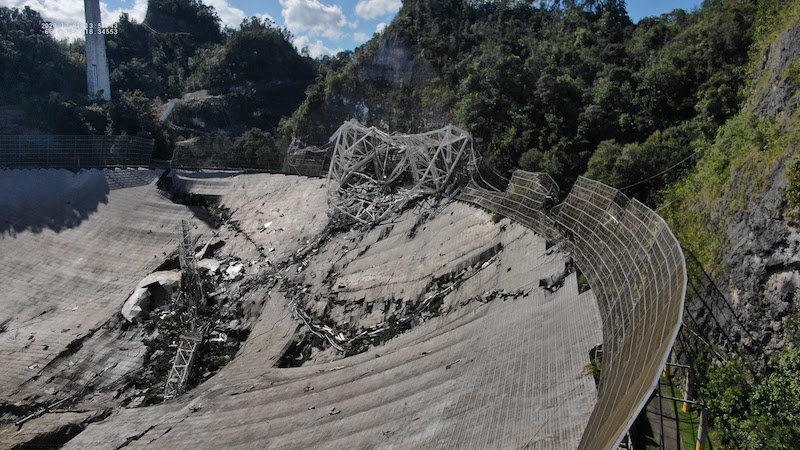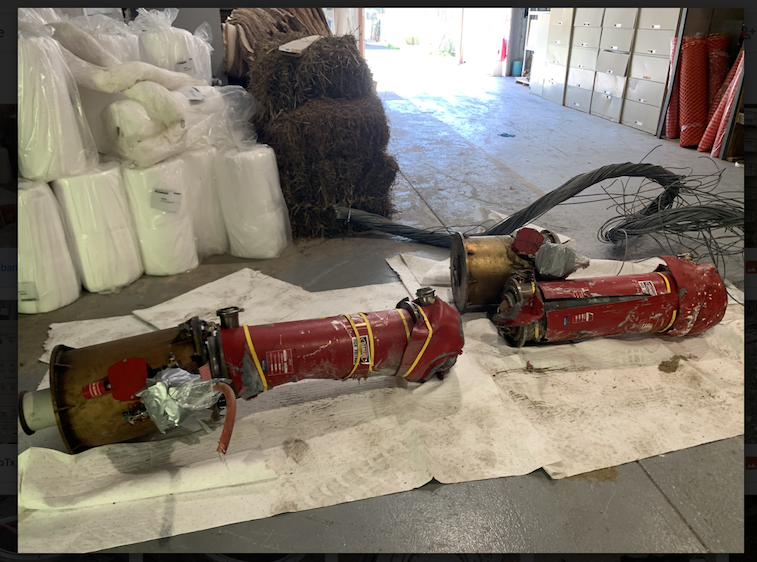- Leter from Dr. Julie Brisset (Principal Investigator of the Arecibo Observatory)13 Sep, 2022
- Arecibo Deputy Principal Scientist to Explore the Cosmos with the JWST02 Sep, 2022
- Letter from the Director22 Aug, 2022
- Piercing through the Clouds of Venus with Arecibo Radar17 Aug, 2022
- Summer greetings from the Facilities and Operations Team!17 Aug, 2022
- Arecibo Observatory at the Small Bodies Assessment Group12 Aug, 2022
- Meet the 2022 Arecibo Observatory REU students!11 Aug, 2022
- Meet Luis R. Rivera Gabriel, Research Intern in the Planetary Radar Group09 Aug, 2022
- Updates from the 2022 CEDAR Workshop in Austin, TX09 Aug, 2022
- Insights into the AAS Conference from AO Analyst Anna McGilvray08 Aug, 2022
- American Astronomical Society’s 240th Meeting: Plenary Lecture Building the Future of Radio Science with the Arecibo Observatory by Dr. Héctor Arce. 28 Jul, 2022
- TRENDS 202227 Jul, 2022
- Advancing IDEA in Planetary Science 27 Jul, 2022
- The Arecibo Observatory: An Engine for Science and Scientists in Puerto Rico and Beyond27 Jul, 2022
- Cryogenic Frontend work for the 12m telescope entering phase II21 Jul, 2022
- Remote Optical Facility Updates20 Jul, 2022
Arecibo Salvage Survey Committee Update for History of Astronomy
Byadmin19 July 2021 Interdisciplinary

Figure 1: Platform structure hanging on the rim wall following collapse. The committee recommended salvaging samples of main components, such as platform corners, azimuth and zenith track portions, rotary joint and beams sections.
| Interdisciplinary |
On December 1st, 2020, the 900-ton instrument platform of the Arecibo radio telescope in Puerto Rico suffered a series of cascading catastrophic cable failures causing it to crash down into the telescope’s 305-meter reflector dish. This followed a November 2020 safety evaluation which found that the main platform support cables may not be capable of supporting the load expected and decommissioning should commence.
By early January 2021, the University of Central Florida (UCF), operators of the Observatory for the National Science Foundation (NSF) and NSF established an Arecibo Observatory (AO) Salvage Survey Committee. With the site of this iconic scientific instrument now a dangerous debris field, this Committee was given a charge to work with the emergency salvage and clearing contractors to recommend the retrieval of items that have potential historical significance, or which might be leveraged for instrument research or informal education. The Committee then established screening procedures at the site to identify debris that might be of historic importance and/or scientific utility.
The AO Salvage Survey Committee consists of representatives from: the AO Science and Visitor’s Center; AO staff, with scientists from astronomy, planetary and atmospheric sciences, as well as technical staff having knowledge of mechanical and electronic systems; the Smithsonian Institution, with expertise in museum curation and the history of astronomy; long-term AO users; and NSF, including the NSF historian.
Since January, the Salvage Survey Committee has identified hundreds of items with potential historical significance and has worked with the clearing contractors to locate these items. This included regular field visits with appropriate safety personnel to identify these objects, photographing (ground and drone) the site to locate them among the debris. Items identified include instruments as well as structural/engineering parts. Examples of structural components salvaged include: the rotary joint, sections of the zenith and azimuth tracks, one corner of the platform (Figure 1) and the cable car (Figure 2). Structural components such as the main and auxiliary cables and a number of cable and socket samples will be first examined for forensic purposes. Examples of instruments and devices from the Gregorian Dome include the S-band transmitter Klystrons (Figure 2) and the ALPHA receiver.
To date, the Committee is only identifying potential items of historic importance or scientific utility that were part of the structure at the time of collapse. In other words, the current efforts are largely triage. A separate procedure will be established to determine which objects will become a part of a curated or representative sample or collection in the future.
In due course, the Committee will report its recommendations to the AO Director and to the NSF. The AO Director will discuss the Committee’s recommendations with NSF, and NSF will provide the AO management with its determination with respect to the recommendations provided in the final report.
It is an impossible task to rank the importance of instruments housed in this telescope; the pieces recommended for preservation carry a great significance in the history of Radio Astronomy, Planetary Radar, Space and Atmospheric Sciences and several generations of citizens impacted by its sheer presence.
The Committee's final report will be made available on the Observatory’s and NSF’s websites. Sign up on the Observatory’s mailing list to receive updates on Seminars, Colloquiums, Science and Education activities.
 Figure 2: Planetary Radar S-band Klystron (2380 MHz, 12 cm, 500 kw) These instruments were among the key elements for Planetary Sciences research especially on Near-Earth Objects, Main Belt Asteroids, comets and neighboring planets.
Figure 2: Planetary Radar S-band Klystron (2380 MHz, 12 cm, 500 kw) These instruments were among the key elements for Planetary Sciences research especially on Near-Earth Objects, Main Belt Asteroids, comets and neighboring planets.
|
 Figure 3:The iconic cable car, which transported instruments, scientists and visitors to the platform.
Figure 3:The iconic cable car, which transported instruments, scientists and visitors to the platform.
|
cable_car.jpeg
|
AO Media Contact |
Contact Person |
Keywords: UCF, AO, Arecibo, Radio, Telescope, salvage, survey, Committee, nsf,

